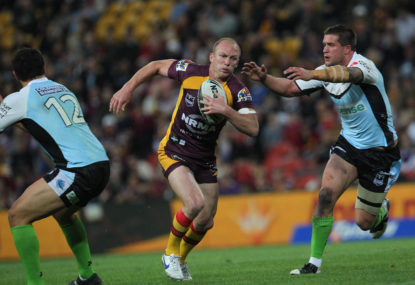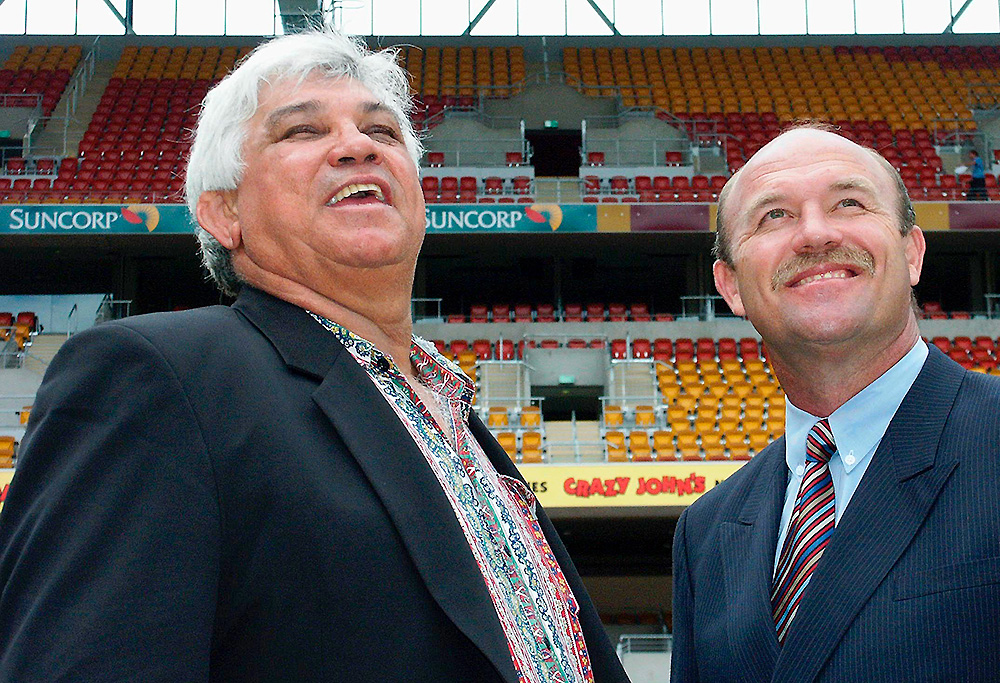A walk in the park: Super Sam shows Roosters what they've been missing in 60-point Anzac smash up
It might have been that simple all along. As much as the structures, coaching and roster come under pressure at the Roosters, the solution…

This week, the NRL named the ten players on a shortlist to be named the next Immortals, with two set to receive the game’s greatest honour.
The ten named and their active years are: Dally Messenger (1908-1913), Frank Burge (1911-1927), Dave Brown (1930-1941), Brian Bevan (1942-1964), Duncan Hall (1945-1957), Norm Provan (1951-1965), Ken Irvine (1958-1973), Ron Coote (1964-1978), Mal Meninga (1979-94), and Darren Lockyer (1995-2011).
It’s a pretty major detour from previous inductions of Immortals, as the concept started with the caveat that only players who featured in the game after World War 2 were eligible.
Obviously, Dally M, Burge and Brown played pre-war, so – not for the first time – these three represent pioneers of the game.
But how do we decide if they are actually eligible of the award they are nominated for if no one really remembers seeing them play the game?
It was the reason the award originated with the post-WWII stipulation – how do you preach that someone was one of the all-time greats if you never actually witnessed their feats on the field?
Stats and facts stand the test of time (unless you’re a politician), but they cannot convey the magnitude of a player’s skill and impact on a game, nor how good the players he faced were.
Was Dally M really that good, or was he just effectively a professional athlete playing against a bunch of pub sides? It’s a question that can’t be answered either way, because who was there to witness not only him, but the quality of opposition he faced?

Dally Messenger
This is not to say that he, Burge and Brown are necessarily unworthy of the accolade – perhaps they are most deserving of all – but perhaps, rather than speculate about how good players might have been, the NRL should look into creating a different category for pre-WWII players who have left an indelible mark on the game?
Because, honestly, do you really give either Burge or Brown a shot at being one of the next two Immortals? Dally M is essentially the godfather of the game, so he’s in with a chance, but after him, the votes are definitely going to go to someone whose feats were admired in the flesh by the voting panel.
Rugby league has a long and proud history in this country, but to put Burge and Brown – who, c’mon, you hadn’t ever heard of before, had you? – alongside Darren Lockyer, who could probably lace a boot up tomorrow and still win games, is chalk and cheese.
A ‘you’ve never heard of them so let’s remedy that’ category should be part of the Immortals concept, but not one and the same. Because while it’s hard enough to gauge players from different eras against one another, how can you begin to do it if you didn’t even see them play?
The second thing the Immortals needs to do is start pushing that cut-off date for eligibility forward.
There are two reasons for doing so.
Firstly, as with the initial reasoning, fewer and fewer people have memories of seeing Bevan, Hall or even Provan play. Sure, yeah, your Dragons-supporting grandparents reminisce fondly about the glory days, but they aren’t getting any younger, are they?
That’s not to say these hypothetical grandparents don’t deserve a say, but as the selection panel’s average year of birth gets later and later, fewer and fewer of them will have the experience to say why a bloke from the 1960s deserves the honour, because they never saw them play.
Secondly, and perhaps most importantly, how many bites at the cherry does a player deserve?
Let’s take Norm Provan. If he was so good, why did he miss induction to the Immortals when they were first announced, by Rugby League Week, all the way back in 1981?
He was eligible, but the initial panel decided Clive Churchill, Bob Fulton, Reg Gasnier, and Johnny Raper were the most worthy recipients.
Provan was again surely in the conversation when two more – Graeme Langlands and Wally Lewis – got the nod in 1999. Ditto when Arthur Beetson became the seventh Immortal in 2003, and Andrew Johns the eighth, in 2012.

Artie Beetson and fellow Immortal Wally Lewis (AAP Image/Gillian Ballard)
That’s four times Provan has been eligible yet overlooked… Maybe he’s had his day in the sun and if he doesn’t get the nod this time, we stop putting him on the shortlist?
It’s getting that way with Irvine, Coote and Meninga as well, who have had multiple opportunities but failed to get a guernsey.
The Immortals brand has to be a living, breathing concept to remain relevant, but it obviously is also completely rooted in history. What’s more, with the NRL officially overtaking the brand, it is undergoing a significant change at the moment – again, as we are seeing with the inclusion of pre-war players on the shortlist.
But with blokes like Johnathan Thurston, Cameron Smith and Billy Slater already being described as ‘Immortals in waiting’, how much longer do we pretend that some bloke no one remembers, who played 70 years ago, is legitimately in the conversation to receive the honour? Or that someone who’s had five cracks at it but failed every time deserves to keep being put up for the honour?